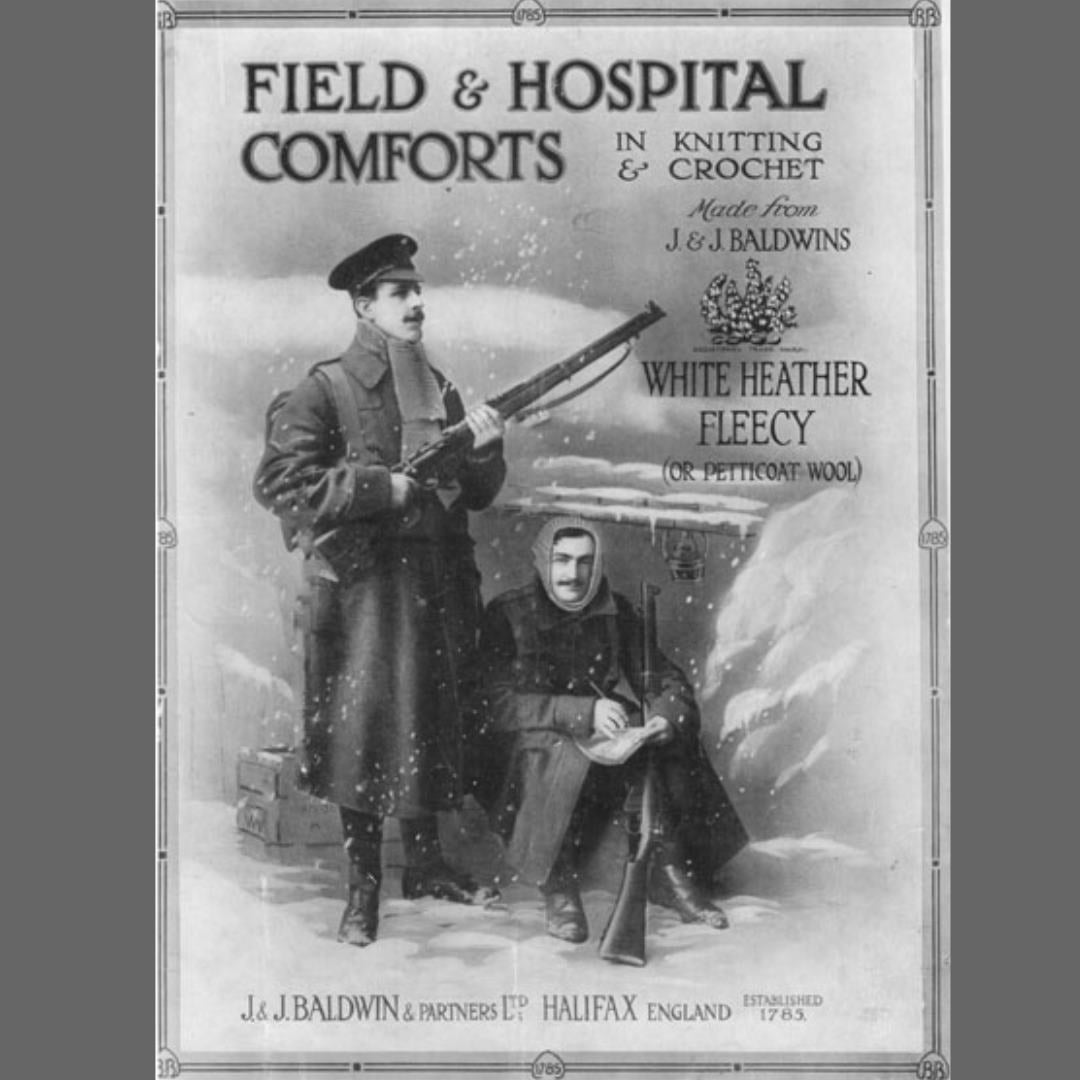Knitting for Victory: How Wool Helped Win The First World War

Wool and Knitting in WWI
What comes to mind when one thinks of home comforts? For me, it’s a warm Merino Throw draped across the sofa and soft Sheepskin Rug to bury my toes into on a cold morning. Surprisingly, British soldiers during the First World War shared a similar sentiment.
Did you know that knitting played a crucial role in supporting soldiers during the war? Across the Western Front, soldiers endured extended periods in muddy, waterlogged trenches filled with rats, lice and the constant threat of enemy attack. This stark reality was far from the romanticised images of comradeship and adventure.

Soldiers arriving at the front line were ill-prepared for the relentless noise of artillery fire, freezing temperatures, and the ever-present threat of gas attacks. The government's reassurances of a quick resolution—"It will all be over by Christmas"—proved to be tragically optimistic, echoing sentiments heard in many conflicts since.
Soldiers were issued only absolute essentials. "Khaki Drill", a basic field service uniform, which included a wool greatcoat, wool trousers, wool tunic, wool flannel shirts, drawers, vests, and three pairs of woollen socks, with more pairs issued every three months. However, these essentials were not enough for the harsh conditions of trench warfare, especially as winter approached.
Frankly speaking, it was all rather miserable, and many longed for the comforts of home. Within a few months of the war starting, a campaign was initiated to produce and send parcels containing small pleasures of home to give the Tommys a helping hand…
Needles, Threads, and Volunteers
A call for volunteers was published in The Times, "There is a great need for knitted socks, etc., for our troops… those who have leisure to knit, or are willing to employ others to do so, send parcels as soon as possible…"
The response was overwhelming. Women across the country formed knitting clubs in towns and villages. Social norms relaxed to allow knitting on buses, in queues, at shops, theatres, dinner parties, and even between courses at restaurants. It was even said that the Archbishop of Canterbury decreed that people were allowed to knit during sermons.
All levels of society contributed to the cause, transcending age, class, and gender. Children learned to knit at school, whilst the elderly and wounded soldiers in hospitals wound wool into balls, made garments, and packed ‘comforts’ to send overseas.

These homemade gifts were invaluable; providing desperately needed warmth in the freezing trenches and dramatically and boosting morale across the front lines.
The Wool Craze
Popular knitting booklets like Weldons and Baldwins circulated around the country, including instructions for making a plethora of woolly goods; ranging from simple mittens to more complicated balaclava helmets and capes. This innovative design would have provided both warmth and protection for the head and neck, shielding soldiers from the harsh elements and potential injury.

The movement had such an effect that the War Office began requesting belts, mittens, and balaclava helmets from the wool drive. Anything that could be knitted was made for the troops, including ingenious items like a chequered waistcoat that doubled as a chess or draughts board and special designs like the rifleman’s glove, a mitten with two fingers.
The historical knitting patterns used during WWI, such as those found in popular booklets like Weldons and Baldwins, were essential for creating knitted comforts for soldiers.
As anyone who has touched a needle and thread knows, garments are rarely perfect, and many soldiers eagerly opened their parcel to find misshapen mittens or a hat far too small for their head. “I couldn’t tell if the garment was for my feet or hands!” Wrote one disappointed solder. Countless postcards and cartoons in papers were published, making light of the situation. Problem pages even featured letters seeking advice on how to tell someone their knitted garments weren't quite up to scratch.

More Than Just a Yarn of Wool
For the soldiers on the Front Line, the (possibly misshapen) garment was far more than just a pair of socks or hat. It was a precious piece of home sent from their families, loved ones, and communities. These woolly comforts reminded troops for who they were suffering freezing conditions, constant bombardment, and risk to life. This tangible connection between home and the front gave them the spirit and morale to press on through one of the most challenging periods in history.
Images
Front Image: Halifax: J & J Baldwins Ltd
Plucky Four Poster: Imperial War Museum
School Children Footage: Imperial War Museum
Knitting Booklet: The National Archives
Holding the Line Postcard: The Joyce Meader Collection